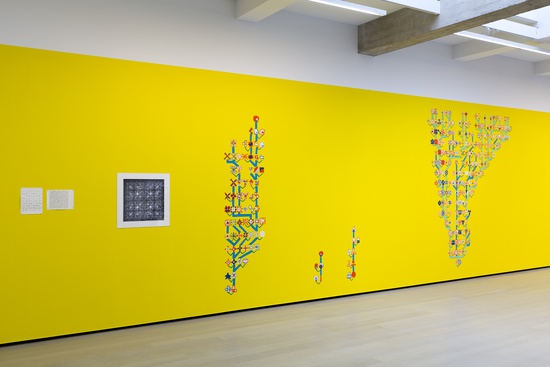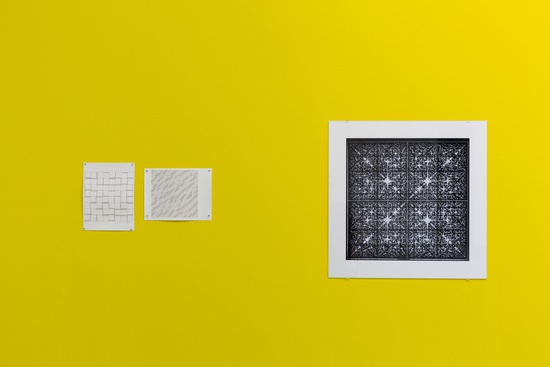RAM 10
Edward Zajec
(1969)
In contrast to many others who worked with computers between 1961 and 1973, Edward Zajec (Italy) did not have a background in mathematics or physics. He had studied at art academies in Cleveland, USA and Ljubljana, Slovenia and taught graphic design at Carleton College in Northfield (Minnesota, USA) from 1968 onwards.
It was in 1968 that Zajec was looking for new ways to express himself. Trained as a painter and graphic artist, he experimented a great deal with repetition in his work. His paintings consist mainly of series of geometric shapes including small variations on a large surface, with Piet Mondriaan and Kazimir Malevich as his most important sources of inspiration. However, Zajec felt restricted by the limited number of variations he could produce within a certain period of time so he started looking for a new medium. This is how he came to use the computer.
The RAM compositions are examples of Zajec’s early computer work. Shapes that consist of lines are divided on a surface in a range of spatial and rhythmic combinations. Both repetition and coincidence play a role in this. The compositions are also determined based on a number of given factors. For example the size of the work is limited by the plotter that has carried out the work.
Zajec could instruct the computer to combine a number of given shapes in a random way thanks to the Random Number Generator. The visual artist introduced a basic repertoire of symbols and possible combinations. Later on, Zajec aimed to let the autonomy of the computer play a larger role in the creative process. He did so by developing systems that could produce a strategy for possible combinations.



